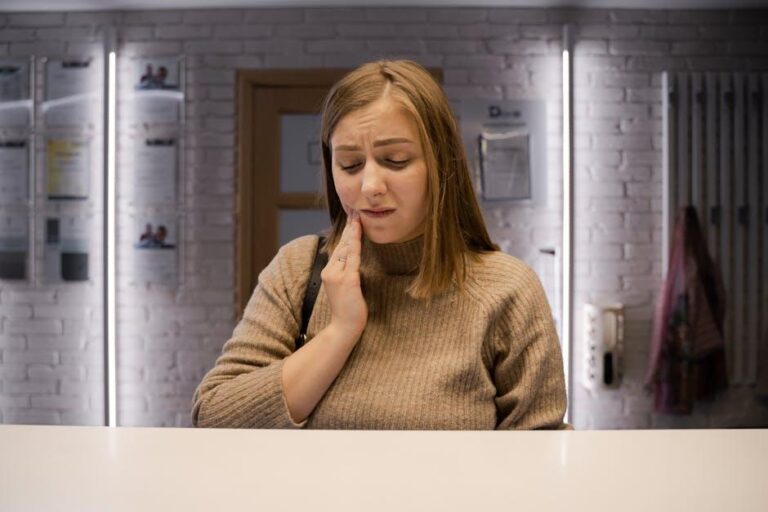1 in 3 Kids Has Dental Problems, Poll Finds
Insights from U.S. News & World Report reveal the growing dental concerns among children in America.
Introduction: The Alarming Reality of Children’s Dental Health
Recent polling data presented by U.S. News & World Report highlights a concerning trend: 1 in 3 children in the United States is currently facing dental problems. This figure underscores a growing public health issue that extends beyond mere cavities and tooth decay to impact overall child well-being.
As parents, educators, and healthcare providers, understanding the root causes, consequences, and preventive strategies for pediatric dental problems is crucial. This article explores these challenges, offers actionable tips, and sheds light on what this statistic really means for families nationwide.
Understanding the Scope: What Does “Dental Problems” Encompass?
The term “dental problems” covers a range of oral health issues commonly found in children, including:
- Tooth Decay (Cavities): The most widespread issue affecting kids, often caused by poor oral hygiene and high sugar intake.
- Gum Diseases: Gingivitis and early periodontal disease can occur in children, leading to bleeding gums and discomfort.
- Tooth Eruption Issues: Problems like delayed eruption or misalignment can cause pain and dental complications.
- Traumatic Dental Injuries: Accidents leading to chipped, cracked, or lost teeth.
- Tooth Sensitivity and Enamel Defects: Often linked to diet and hygiene habits.
These conditions can affect nutrition, speech, confidence, and overall quality of life if left untreated.
Why Are Dental Problems So Prevalent Among Children?
Several contributing factors explain why dental problems are so widespread among kids:
- Poor Oral Hygiene: Irregular brushing and flossing habits result in plaque buildup that causes decay.
- Diet High in Sugars and Processed Foods: Frequent sugary snacks and drinks promote cavity formation.
- Limited Access to Dental Care: Socioeconomic barriers can prevent regular dental check-ups and timely treatment.
- Lack of Awareness and Education: Both parents and children may underestimate the importance of proactive dental care.
- Medication and Medical Conditions: Certain health issues can impact saliva flow or oral environment.
The Impact of Dental Problems on Children’s Lives
Dental problems go beyond cavities—they affect children’s daily lives in the following ways:
| Impact Area | Effect on Child |
|---|---|
| Physical Health | Pain, infection, difficulty eating |
| Academic Performance | School absences, trouble concentrating |
| Emotional Wellbeing | Low self-esteem, anxiety about appearance |
| Long-term Health | Risk of chronic conditions linked to poor oral health |
Practical Tips for Preventing Dental Problems in Kids
Preventing dental problems is within reach with consistent habits and strong parental guidance. Here are key recommendations to enhance your child’s dental health:
- Establish a Daily Oral Hygiene Routine: Teach children to brush twice daily with fluoride toothpaste and floss regularly.
- Monitor Sugar Intake: Limit sugary snacks and beverages, favoring water and balanced meals.
- Schedule Regular Dental Visits: Aim for bi-annual professional cleanings and check-ups starting from the child’s first tooth or first birthday.
- Use Dental Sealants: Ask your dentist about protective coatings that guard the chewing surfaces of back teeth.
- Promote Healthy Habits: Discourage thumb-sucking or prolonged pacifier use which can impact dental alignment.
- Lead by Example: Model good oral hygiene habits so children can follow suit.
Case Study: Turning Around Dental Health in a Community
In a recent initiative in Ohio, a community program focused on preventive dental care for children yielded remarkable results:
| Initiative | Outcome |
|---|---|
| School-Based Dental Screenings | Identified at-risk children early |
| Parent Education Workshops | Increased awareness of oral hygiene importance |
| Provision of Free Fluoride Treatments | Reduction in new cavities by 25% |
This example illustrates how coordinated efforts can significantly improve children’s dental health on a community scale.
First-Hand Experience: A Parent’s Perspective
Maria, a mother of two from Texas, shares her journey:
“I never realized how important dental care was until my eldest developed a painful cavity. After learning from our dentist and adjusting our family’s routine, my kids now actually enjoy brushing and have regular check-ups. It’s made such a difference in their smiles and confidence.”
Conclusion: Prioritizing Kids’ Dental Health Starts Now
The statistic that 1 in 3 kids has dental problems sheds light on a critical health issue that warrants immediate attention. Addressing children’s oral health through education, preventive care, and community support can dramatically reduce dental problems and improve children’s overall quality of life.
Parents and guardians play a pivotal role by fostering healthy habits early, ensuring routine dental visits, and advocating for improved access to dental care. With these efforts, we can hope to see healthier, happier smiles across the nation.
Remember: A healthy smile is a gateway to a healthy life!


